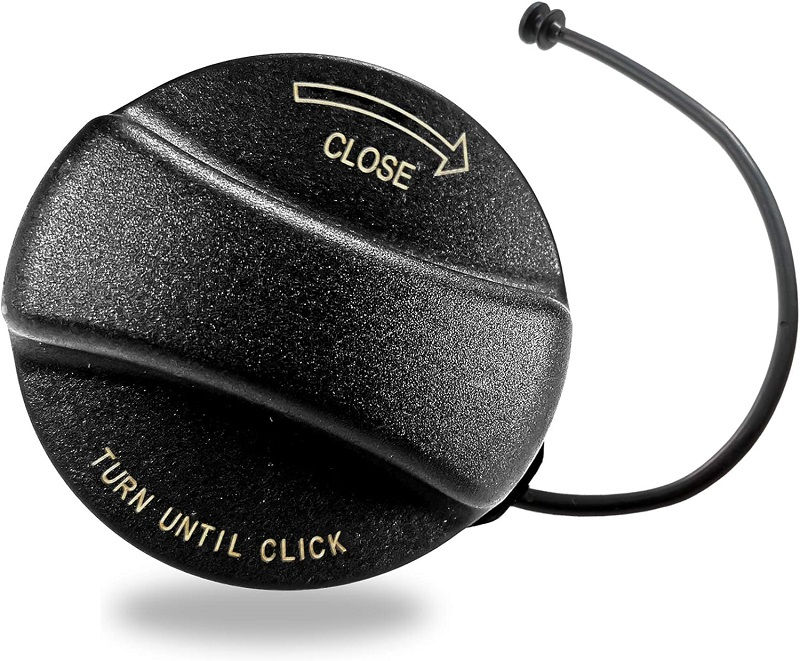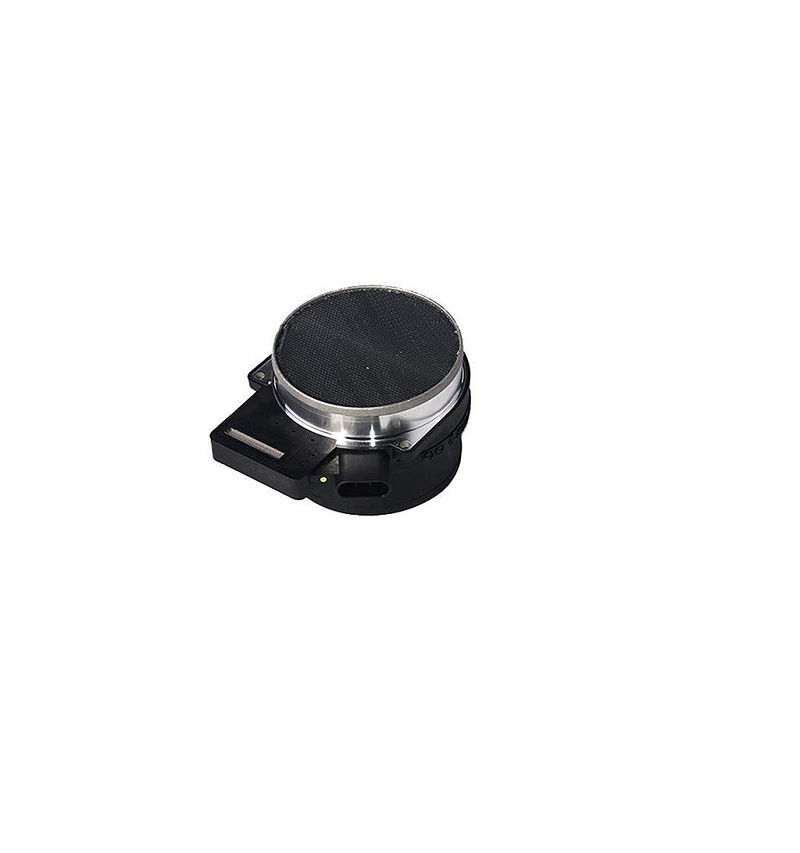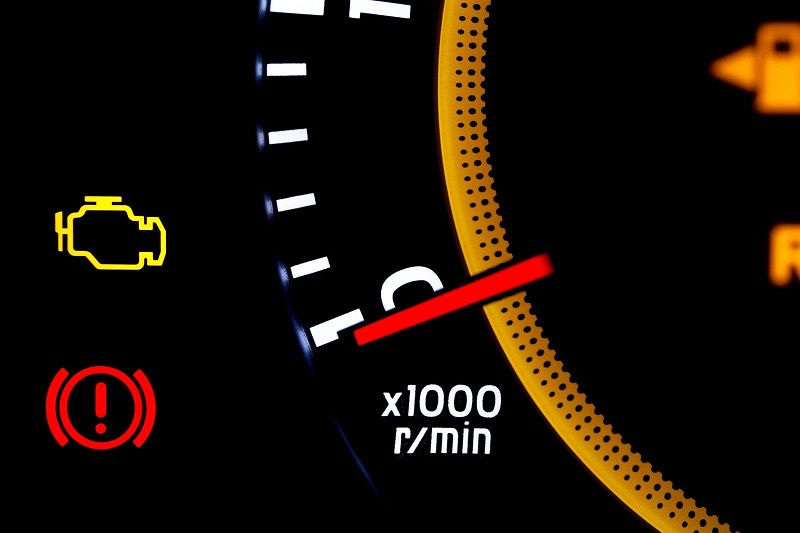This post contains affiliate links. This means I will make a commission at no extra cost to you should you click through and make a purchase [ “As an Amazon Associate, I earn from qualifying purchases.” ]. Read the full disclosure here.
Mini Cooper Check Engine Light GuideMechanic.Com Are you a proud Mini Cooper owner who is baffled by the sudden appearance of the check engine light? Don’t fret! In this comprehensive blog article, we will delve into the various reasons why your Mini Cooper’s check engine light may have come on, and provide you with the necessary solutions to resolve the issue.
Whether you are a seasoned Mini Cooper enthusiast or a new owner, this article will equip you with the knowledge to understand and address this common problem.
Before we dive into the specific causes and solutions, let’s first understand what the check engine light in your Mini Cooper signifies.
See Also: Check Engine Light After Oil Change
The check engine light, also known as the malfunction indicator lamp (MIL), is a crucial component of your vehicle’s onboard diagnostics system.
When this light illuminates on your dashboard, it indicates that there is a problem with one or more of your vehicle’s systems, potentially affecting its performance, emissions, or overall functionality.
Loose Gas Cap
Check out this Gas Cap,Fuel Cap For Mini Cooper& BMW

One of the most common reasons for the check engine light to come on in a Mini Cooper is a loose or faulty gas cap.
This may sound like a minor issue, but it can have a significant impact on your vehicle’s overall performance. A loose gas cap can cause fuel vapors to escape from the fuel tank, triggering the check engine light.
Identification and Fix
To identify if a loose gas cap is the culprit behind the check engine light, you can perform a simple inspection. Start by ensuring that the gas cap is securely tightened.
If you find it loose, tighten it until you hear a clicking sound. After tightening the gas cap, restart your Mini Cooper and monitor if the check engine light goes off. If the light persists, it may be necessary to replace the gas cap altogether.
Prevention
To prevent the check engine light from coming on due to a loose gas cap, always double-check that the cap is tightly secured after refueling.
It’s also essential to ensure that the gas cap is free from dirt and debris, as these can hinder proper sealing. Regularly inspect the condition of the gas cap and replace it if any signs of wear or damage are observed.
Oxygen Sensor Failure
The oxygen sensor plays a vital role in monitoring the amount of oxygen in the exhaust gases. It provides crucial data to the engine control unit (ECU), enabling it to adjust the air-fuel mixture for optimal combustion efficiency. When the oxygen sensor fails or malfunctions, it can trigger the check engine light in your Mini Cooper.
Symptoms
There are several symptoms that may indicate a failing oxygen sensor. One common sign is a decrease in fuel efficiency. If your Mini Cooper starts consuming more fuel than usual, it could be a result of a faulty oxygen sensor.
Another symptom is a rough or irregular idle, where the engine may rev up and down or feel unstable while at a standstill. Additionally, you may notice a decrease in overall engine performance or even an increase in emissions.
Diagnosis and Solution
If you suspect an oxygen sensor failure, it’s advisable to seek professional help for an accurate diagnosis. A mechanic can use specialized diagnostic tools to retrieve error codes from the vehicle’s onboard computer system, which can pinpoint the specific oxygen sensor causing the issue.
See Also: Car Swerving Light
Once the faulty sensor is identified, it needs to be replaced. It’s crucial to use an OEM (Original Equipment Manufacturer) oxygen sensor for optimal performance and compatibility with your Mini Cooper.
Prevention
Preventing oxygen sensor failure involves regular maintenance and care for your Mini Cooper. Ensure that your vehicle undergoes scheduled tune-ups, where the oxygen sensors can be inspected and cleaned if necessary.
Avoid using fuel additives that may harm the oxygen sensors, and be cautious when handling any engine modifications that can impact the air-fuel mixture.
Faulty Mass Airflow Sensor

The mass airflow (MAF) sensor measures the amount of air entering the engine and plays a critical role in determining the correct fuel injection and ignition timing.
When the mass airflow sensor malfunctions, it can lead to various issues, including poor performance, decreased fuel efficiency, and the illumination of the check engine light.
Symptoms
Several symptoms may indicate a faulty mass airflow sensor in your Mini Cooper. One common sign is a decrease in power and acceleration.
If you notice that your vehicle feels sluggish or struggles to pick up speed, it could be due to an issue with the MAF sensor.
Another symptom is a rough or unstable idle, where the engine may fluctuate in RPM (revolutions per minute) or even stall.
Additionally, you may experience a decrease in fuel efficiency, with your Mini Cooper consuming more fuel than usual.
Diagnosis and Solution
If you suspect a faulty mass airflow sensor, it’s recommended to have your Mini Cooper diagnosed by a qualified mechanic. They can use diagnostic tools to retrieve error codes and perform tests to determine the condition of the MAF sensor.
If the sensor is indeed faulty, it will need to be replaced. It’s important to use a high-quality replacement part that matches the specifications of your Mini Cooper.
Prevention
Maintaining a clean and well-functioning mass airflow sensor is crucial for preventing issues. Regularly inspect and clean the MAF sensor according to the manufacturer’s recommendations. Be cautious when using aftermarket air filters, as low-quality filters can contaminate the MAF sensor.
Additionally, avoid driving through dusty or sandy environments whenever possible, as this can accelerate sensor degradation.
Catalytic Converter Problems
The catalytic converter is an essential component of your Mini Cooper’s exhaust system. It helps reduce harmful emissions by converting toxic gases into less harmful substances. However, over time, the catalytic converter can develop problems that trigger the check engine light.
Symptoms
Several symptoms can indicate an issue with the catalytic converter. One common sign is a decrease in engine performance, where your Mini Cooper may feel sluggish or lack power.
Another symptom is an increase in exhaust emissions, which can be detected by a strong smell of sulfur or a visual inspection of excessive smoke from the tailpipe. Additionally, you may experience a decrease in fuel efficiency, with your vehicle consuming more fuel than usual.
Diagnosis and Solution
If you suspect a problem with the catalytic converter, it’s essential to consult a professional mechanic. They can perform diagnostic tests, such as analyzing exhaust gas composition, to determine the condition of the catalytic converter.
If the converter is damaged or clogged, it will need to be replaced. It’s crucial to use a high-quality replacement part that meets the specifications of your Mini Cooper.
Prevention
Preventing catalytic converter problems involves proper maintenance and care for your Mini Cooper. Regularly inspect the exhaust system for any signs of damage or leaks.
Avoid driving with a misfiring engine, as this can lead to an excessive buildup of unburned fuel, which can damage the catalytic converter.
Additionally, ensure that your Mini Cooper undergoes regular tune-ups, where the engine’s performance can be optimized to reduce stress on the catalytic converter.
Ignition System Malfunction
The ignition system of your Mini Cooper is responsible for igniting the air-fuel mixture in the cylinders, enabling combustion and powering the engine.
When the ignition system malfunctions, it can lead to various issues, including the illumination of the check engine light.
Symptoms
There are several symptoms that may indicate an ignition system malfunction in your Mini Cooper. One common sign is a misfiring engine, where the engine may run unevenly or produce a noticeable shaking sensation.
Another symptom is difficulty starting the vehicle, where the engine may crank but fail to start. Additionally, you may experience a decrease in power and acceleration, with your Mini Cooper feeling sluggish or unresponsive.
Diagnosis and Solution
If you suspect an ignition system malfunction, it’s advisable to have your Mini Cooper inspected by a qualified mechanic. They can use diagnostic tools to retrieve error codes and perform tests to pinpoint the issue within the ignition system.
Depending on the specific problem, the faulty component may need to be replaced, such as spark plugs, ignition coils, or the ignition control module.
Prevention
Maintaining a healthy ignition system is crucial for preventing malfunctions. Ensure that your Mini Cooper undergoes regular tune-ups, where the ignition system components can be inspected and replaced if necessary.
See Also: Service Engine Soon
Use high-quality spark plugs and ignition components that are compatible with your vehicle’s specifications. Additionally, avoid driving through deep water or flooded areas, as this can cause damage to the ignition system.
Emission Control System Issues
The emission control system in your Mini Cooper plays a vital role in reducing harmful pollutants released into the environment.
When issues arise within the emission control system, it can trigger the check engine light and potentially lead to failed emissions tests.
Symptoms
There are several symptoms that may indicate problems with the emission control system. One common sign is the illumination of the check engine light. Additionally, you may notice a decrease in engine performance, with your Mini Cooper feeling sluggish or lacking power.
Another symptom is an increase in exhaust emissions, which can be detected by a strong smell of sulfur or a visual inspection of excessive smoke from the tailpipe.
Diagnosis and Solution
Diagnosing emission control system issues in your Mini Cooper requires the expertise of a professional mechanic. They will use diagnostic tools to retrieve error codes and perform tests to identify the specific problem within the system.
Depending on the issue, the mechanic may need to inspect components such as the EGR valve, PCV valve, or evaporative emissions control system. Once the problem is identified, the necessary repairs or replacements can be carried out to rectify the issue.
Prevention
Regular maintenance and care for your Mini Cooper can help prevent emission control system problems. Ensure that your vehicle undergoes scheduled tune-ups, where the emission control system components can be inspected and serviced.
Follow the manufacturer’s recommended maintenance schedule for replacing components such as the EGR valve or oxygen sensors.
Additionally, avoid driving with a misfiring engine or ignoring any warning signs related to the emission control system.
Faulty Spark Plugs or Wires
Spark plugs and ignition wires are integral components of your Mini Cooper’s ignition system. When these components become worn out or damaged, it can lead to engine misfires, decreased fuel efficiency, and the illumination of the check engine light.
Symptoms
Several symptoms may indicate faulty spark plugs or ignition wires in your Mini Cooper. One common sign is engine misfires, where you may feel a hesitation or jerking motion while driving.
Another symptom is a decrease in fuel efficiency, with your vehicle consuming more fuel than usual. You may also experience a rough or unstable idle, where the engine may exhibit irregular RPM or feel shaky while at a standstill.
Diagnosis and Solution
If you suspect faulty spark plugs or ignition wires, it’s recommended to have your Mini Cooper examined by a professional mechanic.
They will inspect the condition of the spark plugs and ignition wires, looking for signs of wear, damage, or carbon buildup.
If necessary, the spark plugs or ignition wires will be replaced with high-quality replacements that meet your vehicle’s specifications.
Prevention
Regular maintenance of your Mini Cooper’s ignition system can help prevent spark plug and ignition wire issues. Replace spark plugs according to the manufacturer’s recommended schedule, typically every 30,000 to 50,000 miles.
Inspect ignition wires for any signs of wear or damage and replace them if necessary. Additionally, avoid driving in extreme weather conditions, such as heavy rain or snow, as moisture can impact the performance of the ignition system.
Vacuum Leak
A vacuum leak occurs when there is an unintended gap or opening in the vacuum system of your Mini Cooper. This can lead to a variety of issues, including rough idling, decreased power, and the activation of the check engine light.
Symptoms
Several symptoms may indicate a vacuum leak in your Mini Cooper. One common sign is a rough or inconsistent idle, where the engine may rev up and down or feel unstable while at a standstill.
Another symptom is a decrease in power and acceleration, with your vehicle feeling sluggish or lacking responsiveness.
Additionally, you may notice a hissing sound coming from the engine compartment, indicating the presence of a vacuum leak.
Diagnosis and Solution
Diagnosing a vacuum leak in your Mini Cooper requires careful inspection of the vacuum system. A professional mechanic will use specialized tools and techniques to detect leaks, such as smoke testing or the use of a vacuum gauge.
See Also: Engine Light on Car Shaking
Once the leak is identified, the necessary repairs can be carried out, which may involve replacing damaged hoses, gaskets, or seals.
Prevention
To prevent vacuum leaks in your Mini Cooper, it’s important to regularly inspect and maintain the vacuum system. Check hoses and connections for signs of wear or damage, and replace them if necessary.
Ensure that all fittings are securely tightened and that gaskets and seals are in good condition. Avoid using excessive force or over-tightening components, as this can lead to damage and potential leaks.
Problems with the Fuel System
The fuel system of your Mini Cooper is responsible for delivering fuel to the engine for combustion. When issues arise within the fuel system, such as a clogged fuel filter or failing fuel pump, it can trigger the check engine light.
Symptoms
There are several symptoms that may indicate problems with the fuel system. One common sign is the illumination of the check engine light.
Additionally, you may experience a decrease in engine performance, with your Mini Cooper feeling sluggish or lacking power.
Another symptom is difficulty starting the vehicle, where the engine may crank but fail to start. You may also notice a decrease in fuel efficiency, with your vehicle consuming more fuel than usual.
Diagnosis and Solution
Diagnosing fuel system problems in your Mini Cooper requires the expertise of a professional mechanic. They will perform tests and inspections to identify the specific issue within the fuel system.
This may involve checking the fuel pressure, inspecting the fuel pump, or cleaning/replacing the fuel filter. Once the problem is identified, appropriate repairs or replacements can be carried out.
Prevention
Maintaining a healthy fuel system is crucial for preventing issues in your Mini Cooper. Follow the manufacturer’s recommended maintenance schedule for fuel filter replacements.
Avoid using low-quality or contaminated fuel, as this can lead to clogs or damage within the fuel system. Additionally, ensure that your Mini Cooper undergoes regular tune-ups, where the fuel system can be inspected and serviced.
Electrical System Malfunction
The electrical system of your Mini Cooper includes various components such as the battery, alternator, and wiring. When electrical system failures occur, it can manifest as check engine light warnings.
Symptoms
Several symptoms may indicate an electrical system malfunction in your Mini Cooper. One common sign is the illumination of the check engine light.
Additionally, you may experience issues with starting the vehicle or notice a decrease in overall electrical functionality, such as dimming lights or erratic behavior of dashboard indicators.
Diagnosis and Solution
Diagnosing electrical system malfunctions in your Mini Cooper requires the expertise of a professional mechanic. They will use diagnostic tools and techniques to identify the specific problem within the electrical system.
This may involve testing the battery, alternator, and other electrical components for proper functionality. Once the issue is pinpointed, the necessary repairs or replacements can be carried out.
Prevention
Preventing electrical system malfunctions involves regular maintenance and care for your Mini Cooper’s electrical components. Ensure that the battery terminals are clean and securely connected.
Check the condition of the alternator and have it tested if necessary. Avoid overloading the electrical system with excessive aftermarket modifications or accessories. Additionally, address any electrical issues promptly to prevent further damage to the system.
In conclusion, the check engine light in your Mini Cooper should never be ignored, as it serves as an important indicator of underlying issues that require attention.
By understanding the potential causes and solutions outlined in this article, you can confidently address the check engine light and ensure the optimal performance and longevity of your beloved Mini Cooper.
See Also: Volvo Check Engine Light
Remember to consult a professional mechanic if you are uncertain or unable to resolve the issue on your own. Drive safe!
Related video of Understanding the Mini Cooper Check Engine Light: Causes and Solutions
- Seafoam Catalytic Converter Cleaner: It Work & How to Use It? - April 18, 2025
- Rislone Catalytic Converter Cleaner: What It Is, How It Works - April 18, 2025
- Wynn’s Catalytic Converter Cleaner 325ml - April 17, 2025

